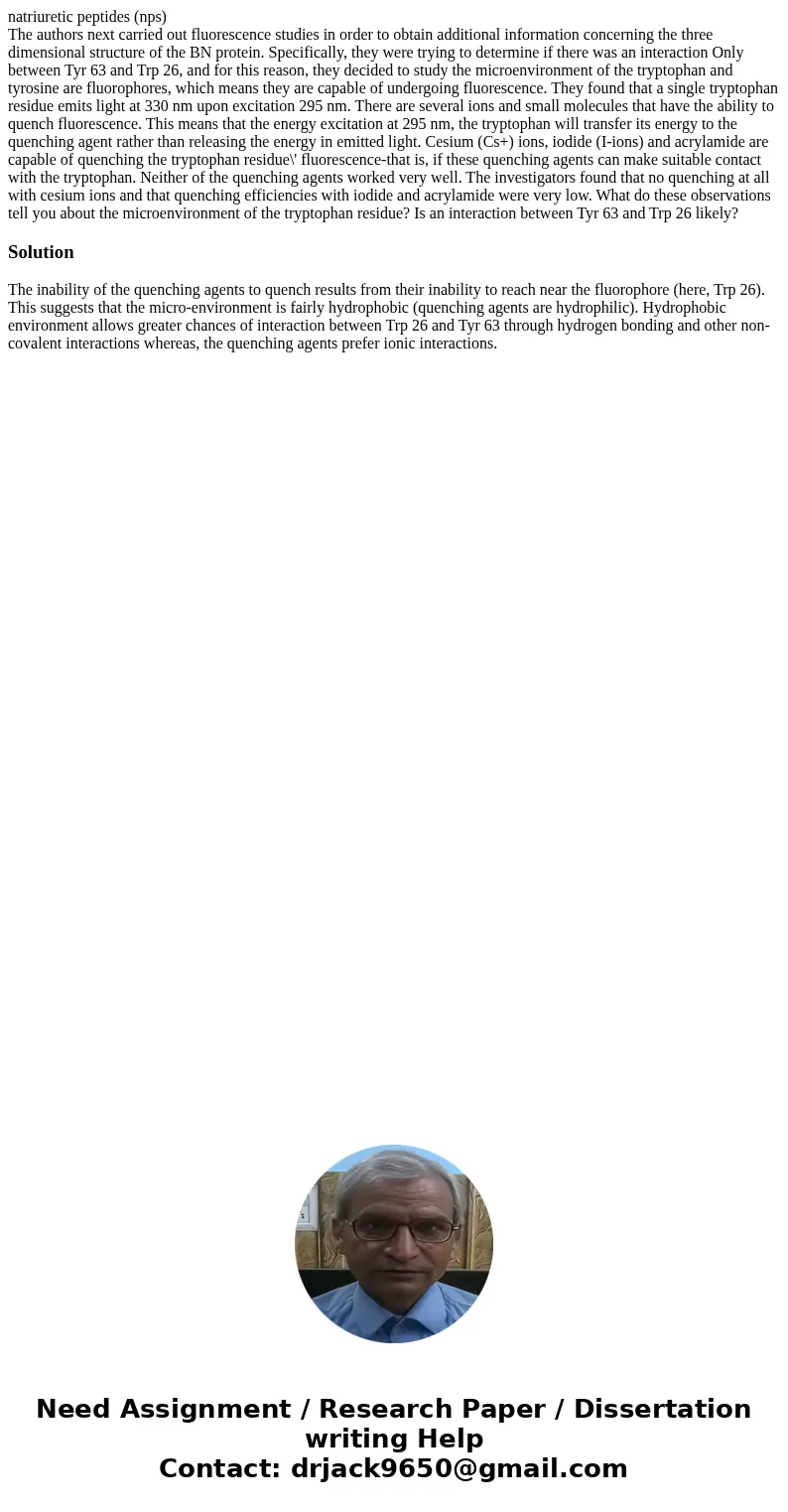natriuretic peptides nps The authors next carried out fluore
natriuretic peptides (nps)
The authors next carried out fluorescence studies in order to obtain additional information concerning the three dimensional structure of the BN protein. Specifically, they were trying to determine if there was an interaction Only between Tyr 63 and Trp 26, and for this reason, they decided to study the microenvironment of the tryptophan and tyrosine are fluorophores, which means they are capable of undergoing fluorescence. They found that a single tryptophan residue emits light at 330 nm upon excitation 295 nm. There are several ions and small molecules that have the ability to quench fluorescence. This means that the energy excitation at 295 nm, the tryptophan will transfer its energy to the quenching agent rather than releasing the energy in emitted light. Cesium (Cs+) ions, iodide (I-ions) and acrylamide are capable of quenching the tryptophan residue\' fluorescence-that is, if these quenching agents can make suitable contact with the tryptophan. Neither of the quenching agents worked very well. The investigators found that no quenching at all with cesium ions and that quenching efficiencies with iodide and acrylamide were very low. What do these observations tell you about the microenvironment of the tryptophan residue? Is an interaction between Tyr 63 and Trp 26 likely?Solution
The inability of the quenching agents to quench results from their inability to reach near the fluorophore (here, Trp 26). This suggests that the micro-environment is fairly hydrophobic (quenching agents are hydrophilic). Hydrophobic environment allows greater chances of interaction between Trp 26 and Tyr 63 through hydrogen bonding and other non-covalent interactions whereas, the quenching agents prefer ionic interactions.

 Homework Sourse
Homework Sourse